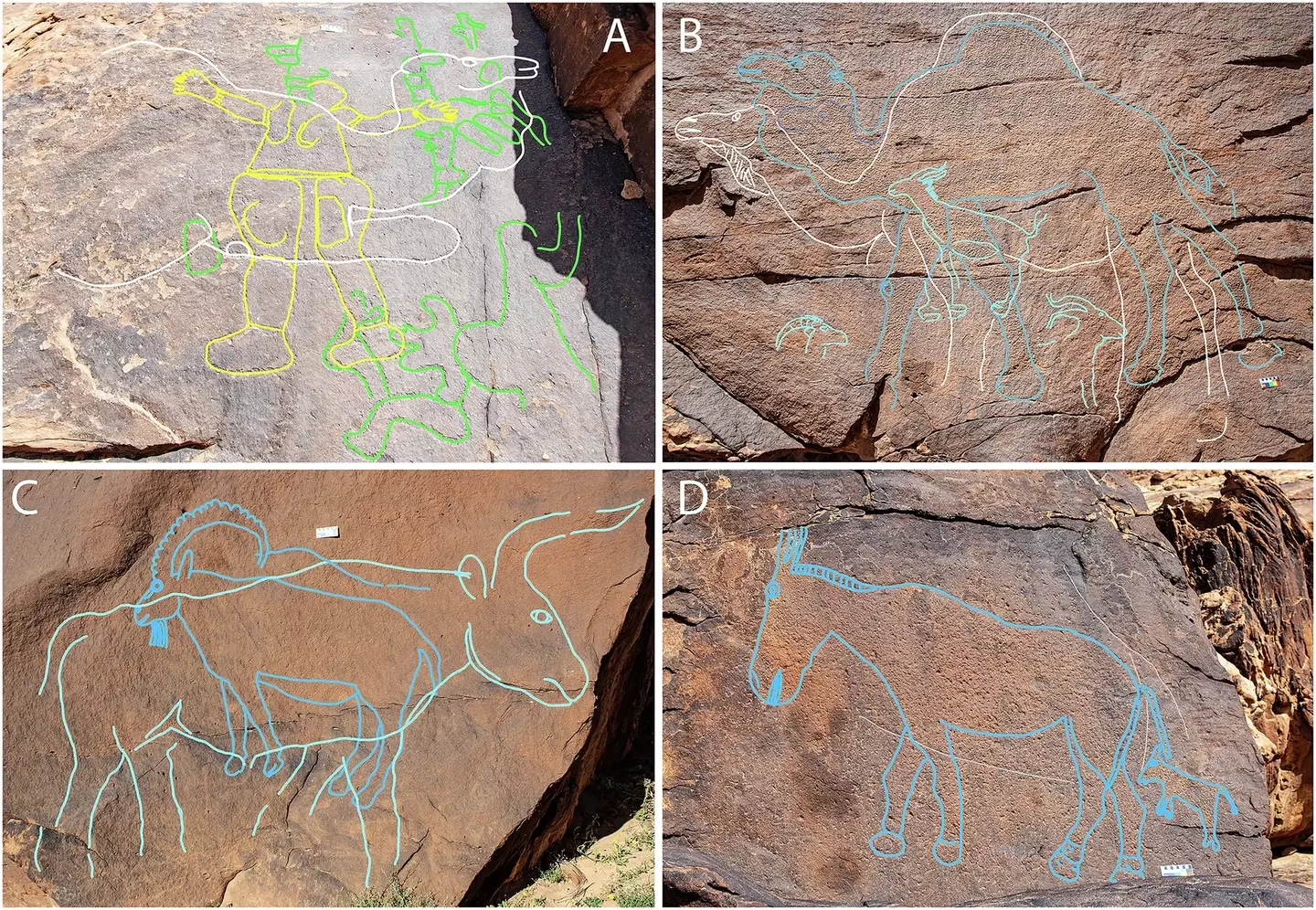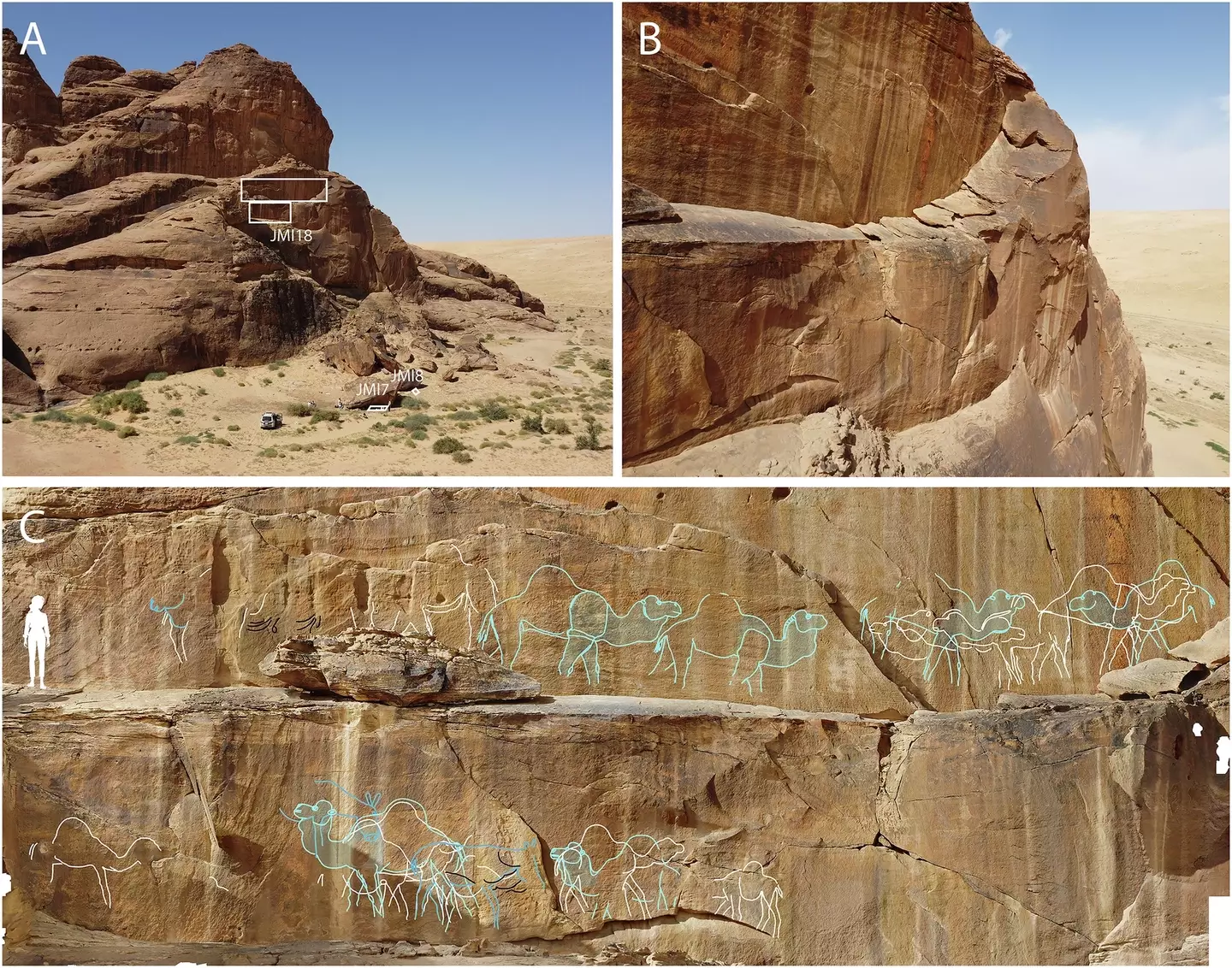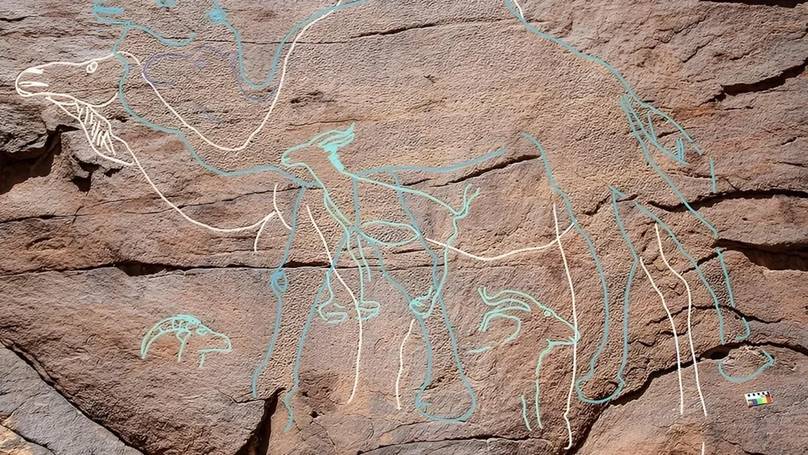Ancient Saudi Desert Find Challenges Everything We Thought About Human Origins—What Could This Mean?
Imagine stumbling upon colossal artworks etched into sandstone cliffs—some as tall as your average doorway and wider than a dining table—dangling precariously 128 feet above ground in the Arabian desert. Sounds like a daredevil’s dream or an ancient Instagram stunt, right? Well, turns out, these jaw-dropping petroglyphs are no prank. Unearthed by some seriously gutsy archaeologists in northern Saudi Arabia, these 12,000-year-old masterpieces don’t just blow our minds for their size or danger-factor but rewrite the history books on when humans first thrived in these harsh desert lands. Crafted by clever hunter-gatherer crews between 12,800 to 11,400 years ago, these carvings of camels, donkeys, and gazelles weren’t just art for art’s sake—they were savvy maps to precious water sources during the rainy season. Who knew that marking territory in prehistoric times could be so artistically bold and life-saving? Hold onto your hats because this discovery isn’t just a walk down memory lane—it’s a leap into an era where survival and artistry danced on the edge of a cliff.
Archeologists have uncovered stunning pieces of life-size rock art carved into the sandstone cliffs of the Arabian desert some 12,000 years ago.
The incredible discovery in northern Saudi Arabia challenges ideas previously held about when people first inhabited the region, according to researchers.
It’s believed the markings were made by hunter-gatherer communities, somewhere in the region of 12,800 to 11,400 years ago, in a bid to mark the location of water sources.
Around 60 different pieces of rock art were found, bearing the portrayal of around 130 animals, including camels, donkeys, gazelles and more, just south of the Nefud desert at several different locations within a 20 mile radius of the mountains.

Some of the artwork spanned 7ft tall and 8.5ft wide (Nature Communications)
Some of the artwork, particularly those of camels, spanned as high as 7ft tall and more than 8ft wide, and many of them were situated on towering cliffs around 128ft from the ground.
According to archaeologist and rock art researcher Maria Guagnin of the University of Sydney, who led the study into the ancient rock art, ‘the engravers would have had to stand on a ledge directly in front of the cliff’. Guagnin, who published the study in Nature Communications, added: “It would have been extremely dangerous to make these engravings as the ledge is very narrow and slopes downwards.
“Standing on this ledge, the engravers would also not have been able to see the whole image they were creating. But they had the skill to still produce a naturalistic representation.”

Many of them hung off the side of cliffs (Nature Communications)
But not only is the artwork incredibly impressive, both in design and the way it came to be, it also serves as evidence that early hunter-gatherer communities were living in an era significantly earlier than researchers previously believed.
“The findings show that communities were able to become fully established in desert environments much earlier than previously thought. They must have known the landscape incredibly well,” Guagnin added.
“Most of the camels show male camels in rut, identifiable by the straining neck muscles as they make a rumbling noise during the mating season — which is normally during the wet season. So the rock art links to the rainy season and marks locations where water pools.”




















Post Comment